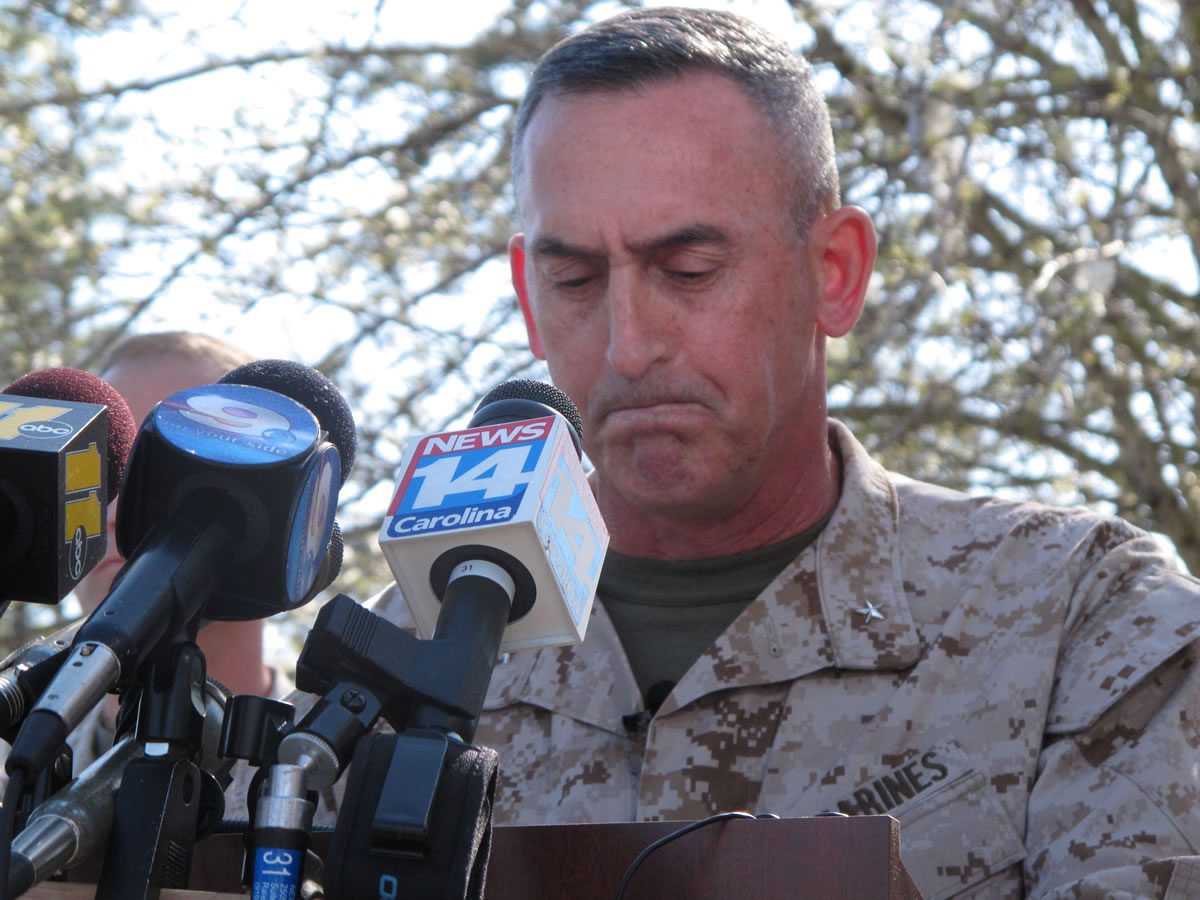HAWTHORNE, Nev. — Hundreds of residents in a rural community steeped in military history turned out to mourn the loss of seven Marines as investigators arrived at an ammunition depot to try to determine how a mortar shell exploded at the Nevada base and sent shrapnel flying into troops during a training exercise.
Families with children clutching small American flags were among the nearly 300 people who attended the brief memorial service Tuesday, where a trumpeter played taps at a city park as a giant American flag flew at half-staff across the street from the base at dusk.
Marine officers from Camp Lejeune, N.C., who arrived at the Hawthorne Army Depot on Tuesday, could not attend the memorial, as they began the task of figuring out what caused a mortar shell to explode in its firing tube. The accident prompted the Pentagon to restrict the use of the weapons until an investigation can determine their safety, officials said.
“Although this is a very difficult time for the entire depot and our small town, we will continue to work closely with the Marine Corps during this tragic incident,” said Lt. Col. Craig M. Short, commander of the Hawthorne Army Depot, in a statement Wednesday.



